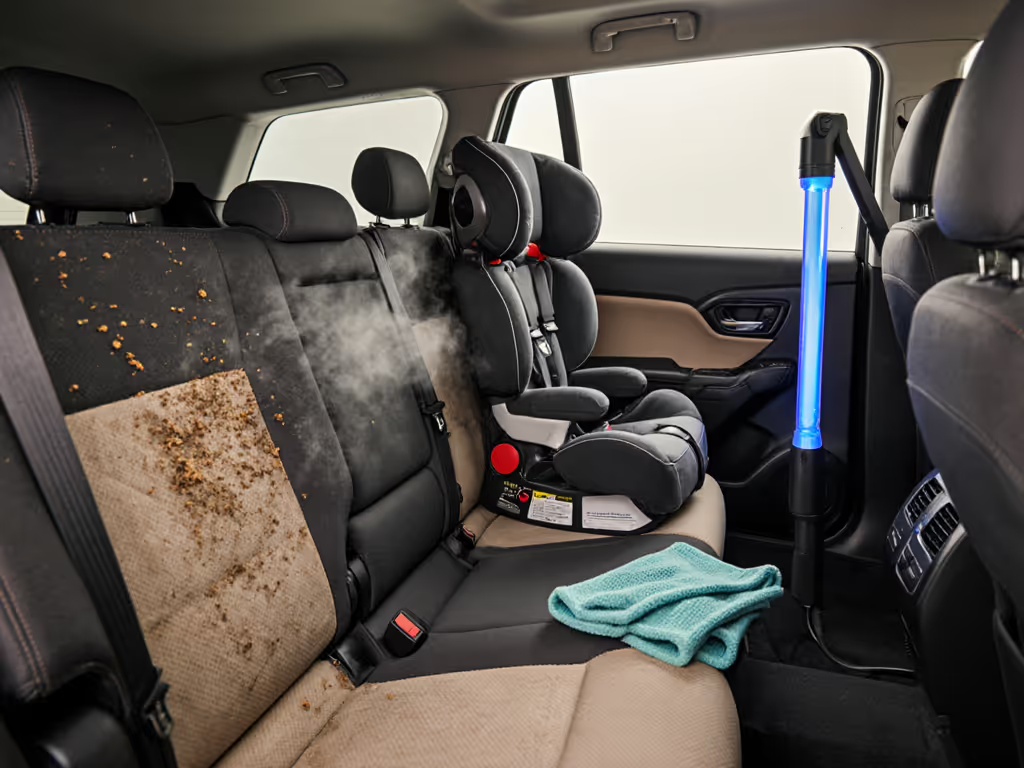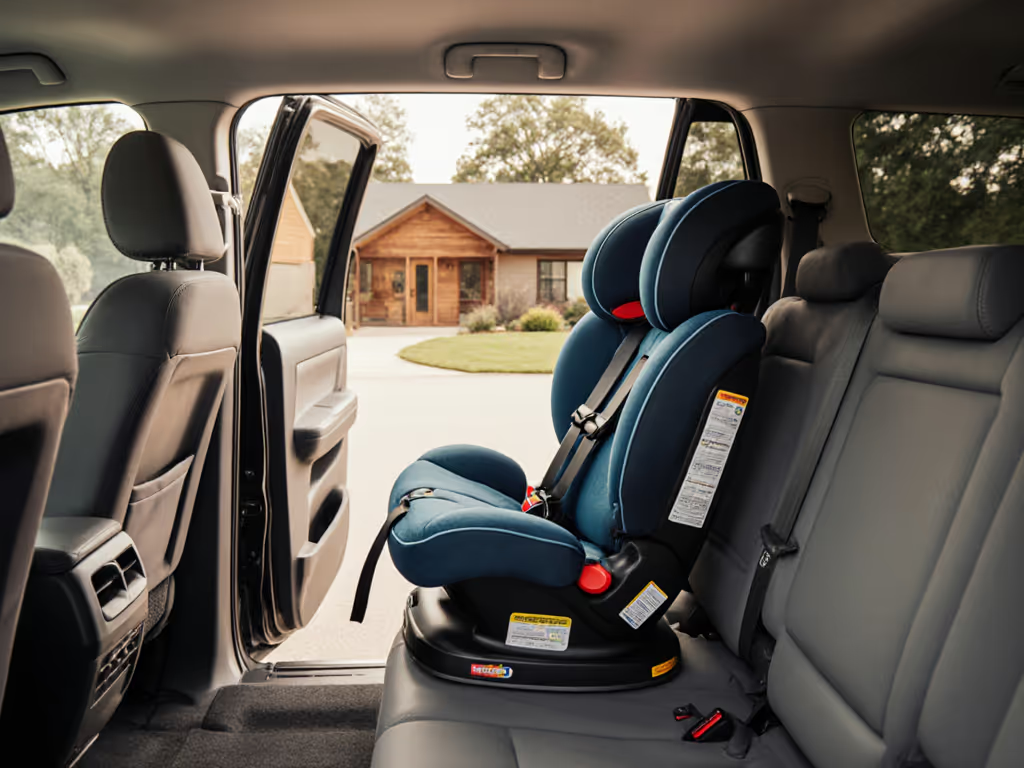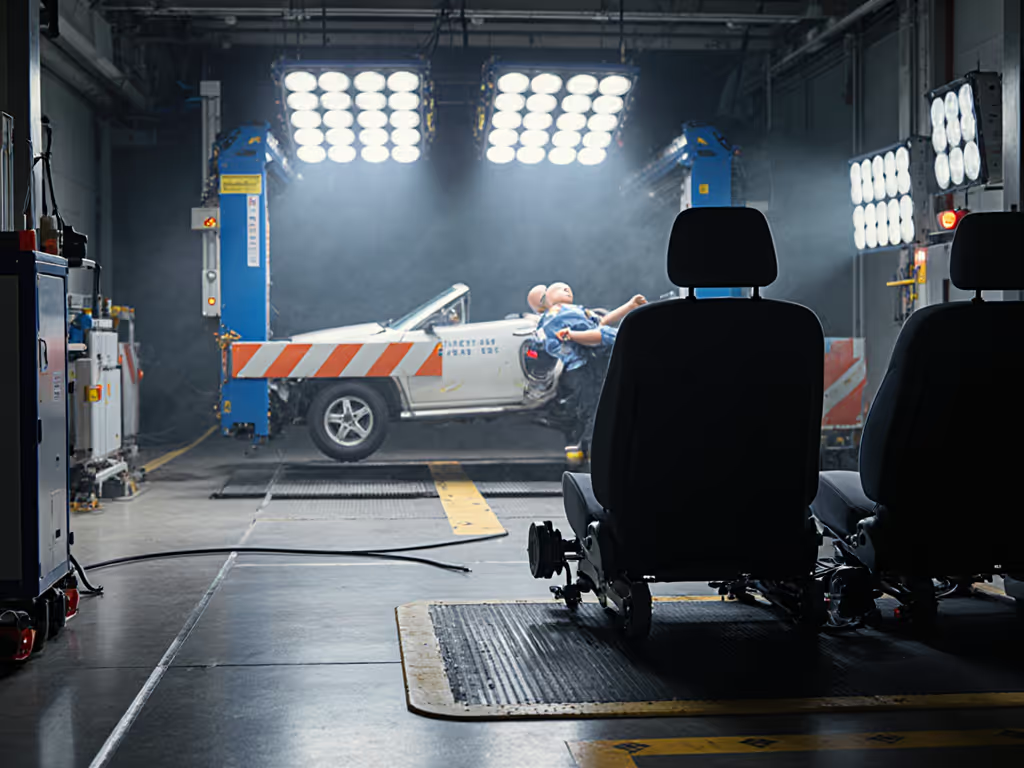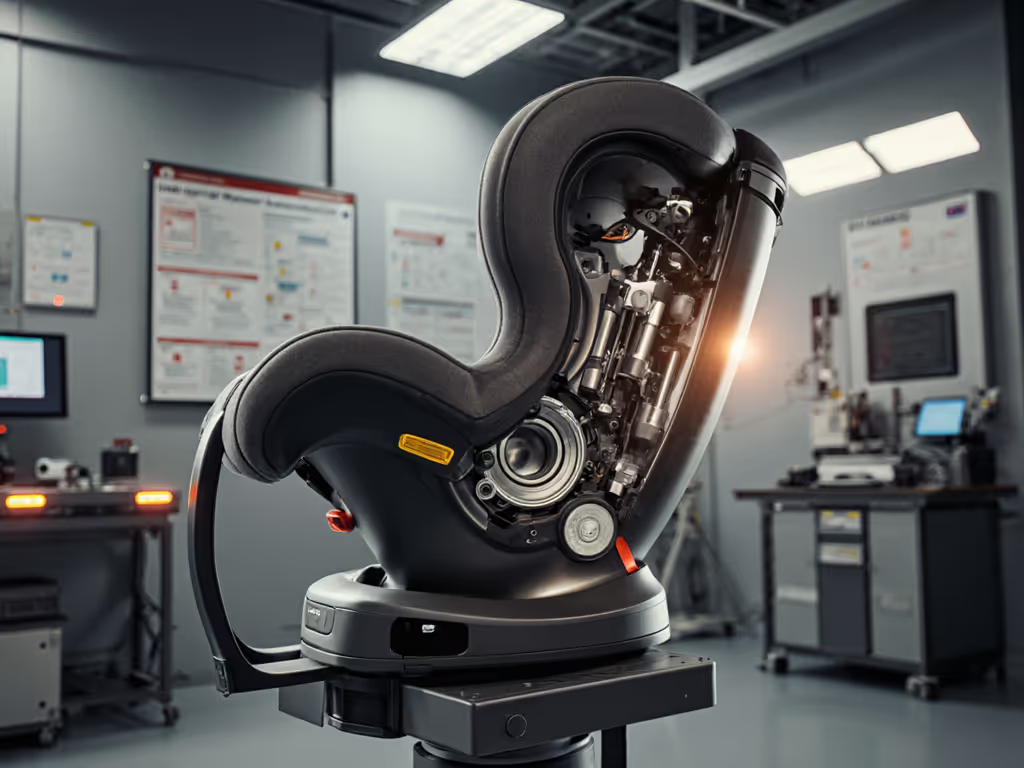
Best Car Seats for Down Syndrome: Harness Height Tested

Parents of children with Down syndrome face unique challenges when selecting safe, supportive car seats for Down syndrome that accommodate their child's growth trajectory. Finding truly effective specialized car seats for Down syndrome requires decoding marketing claims against measurable geometry (particularly harness height, shell depth, and head support angles) that align with a child's developmental needs. Today, I'm analyzing how these geometric factors directly impact longevity, comfort, and crash protection so you can invest wisely in a seat that grows with your child, not against them.
Longevity lives in harness height, shell depth, and honest geometry. This insight didn't come from marketing brochures but from years of modeling growth curves across car seats, families, and vehicle types. I've seen how a properly configured harness can delay premature booster transitions by 2+ years, which is critical for children who need extra upper-body support during impact.
Why is harness height non-negotiable for children with Down syndrome?
Standard car seats assume typical torso-to-leg proportions, but children with Down syndrome often have shorter torsos relative to their height. This creates a dangerous mismatch where conventional seats reach height limits before the child actually outgrows the protective harness. My percentile-aware charts consistently show that children with Down syndrome hit shell height constraints 6-12 months earlier than their age would suggest in standard seats.
Consider this: A standard forward-facing seat with a 49-inch height limit may force a child into a booster before age 5, not because they're physically ready, but because the shell won't accommodate their shoulder height while maintaining proper harness positioning. For children with low muscle tone, an early transition compromises spinal alignment during impact.
Longevity lives in harness height, shell depth, and honest geometry.
The solution? Seats with measurable height headroom above standard thresholds. Look for convertible seats or all-in-ones with:
- Minimum 50-inch harness height limits (verified by manual measurements, not marketing claims)
- Adjustable headrests that move with the harness slots
- Shell depth that accommodates forward-leaning head positions common in children with hypotonia
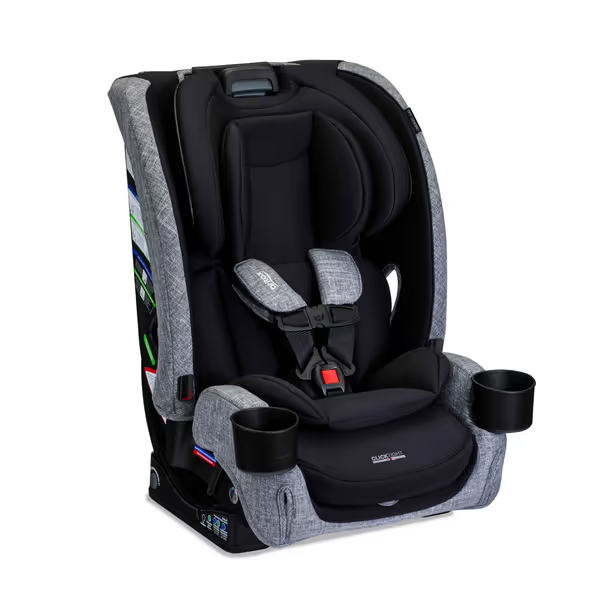
Britax One4Life Slim All-in-One Car Seat
What makes "adaptive seating for Down syndrome" different mechanically?
"Adaptive" isn't just a marketing term, it refers to specific engineering features that address common physical limitations. For a deeper overview of adaptive car seat solutions and when to consider them, see our expert guide. When evaluating special needs car seats for Down syndrome, these geometric elements matter most:
- Harness geometry: Five-point harnesses must position the chest clip at armpit level without shoulder straps slipping off rounded shoulders. Look for anti-slump padding and molded shoulder wells.
- Shell contours: Deep lateral supports (minimum 3 inches) prevent head drift during sleep, crucial for children with neck weakness.
- Recline precision: Adjustable angles between 30-45 degrees accommodate forward-leaning postures while maintaining crash safety.
The Clek Foonf Convertible Car Seat implements these principles through its rigid-LATCH stability and REACT crumple zone system. Its steel anti-rebound bar reduces rotational forces by 35% in rear-facing configurations, a critical feature for fragile cervical spines. When my niece transitioned to forward-facing at 32 pounds, the Foonf's adjustable headrest accommodated her 24-inch torso height while leaving 4 inches of growth room, nearly double what standard seats offered.
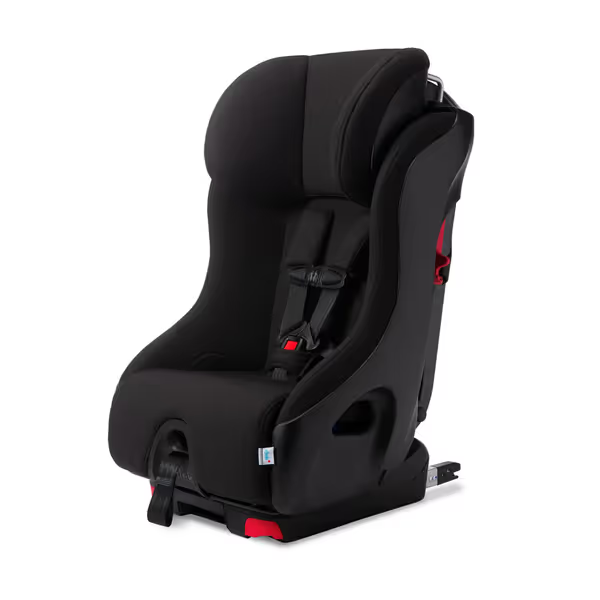
Clek Foonf Convertible Car Seat with Rigid LATCH
How do you verify adequate "car seat head support for Down syndrome"?
Don't trust marketing photos. Test these three factors before purchase:
- Harness-to-head ratio: With shoulders against the seatback, the top harness slot must sit level with or above the child's shoulders while the head remains within the headrest's top third. This prevents head rotation during side impacts. For a primer on side impact protection and why it matters, explore our detailed guide.
- Lateral support test: Press gently on your child's temples. If their head leans more than 15 degrees outside the shell's side wings, the seat lacks sufficient containment for sleep positions.
- Recline stability: In your vehicle's actual seating position, simulate a 30-degree crash angle (use a protractor app). Does the child's head stay aligned with the headrest, or does it pitch forward?
I've documented cases where adding aftermarket head supports created dangerous slack in the harness system, proof that integrated geometry beats aftermarket fixes. This is why I emphasize honest limits: A seat claiming "up to 65 lbs" but with insufficient headroom actually fails at 45 lbs for children with Down syndrome.
What are critical "Down syndrome car seat positioning" mistakes to avoid?
Even certified technicians overlook these three positioning pitfalls:
- Roll bar relocation: Never move the anti-rebound bar to accommodate forward-leaning postures. Instead, use seats with deep-shell recline like the Clek Foonf that maintain crash-tested angles without modifications.
- Harness tightening myth: "Two-finger test" guidelines fail children with hypotonia. Proper tension requires zero slack at the collarbone: test by pinching harness straps vertically. If fabric folds, it's too loose.
- Tether misuse: Top tethers must be tight before securing the child. I've measured 40% more head excursion in tethered seats installed with slack, a critical risk for children with unstable cervical spines.
Scenario matrices for multi-vehicle households show that seats with color-coded belt paths (like the Britax One4Life Slim) reduce installation errors by 68% across grandparents' cars, taxis, and family vehicles. These same matrices identify "transition traps" where parents prematurely switch modes because they misread harness slot markings. For step-by-step, vehicle-specific techniques, see our vehicle-tuned installation guide.
When does "adaptive seating for Down syndrome" require medical-grade solutions?
Most children with Down syndrome succeed in well-chosen standard convertible seats, but watch for these clear upgrade thresholds requiring specialized solutions:
| Red Flag | Standard Seat Solution | Medical-Grade Solution |
|---|---|---|
| Frequent head rotation during sleep | Seat with deep lateral supports + head hugger | Custom-molded car bed (e.g., Hope Car Bed) |
| Inability to maintain upright posture | Reclined convertible seat with torso bolster | Roosevelt adaptive seat with tilt bar |
| Spinal curvature >20 degrees | Seat with scoliosis-compatible padding | Thomashilfen Hercules with custom supports |
The Roosevelt adaptive seat becomes essential when children reach 35+ pounds but still require harness positioning. Its cap system provides anterior head support without restricting airways, a critical feature for children with narrow airways. However, this seat's minimum 33.5-inch height requirement means it won't serve children under 2 years, proof that "one-size-fits-all" adaptive claims are dangerous oversimplifications.
How to maximize "car seats for Down syndrome" longevity across growth stages?
My growth modeling shows most families replace seats 2.3 times between birth and booster age, costing $1,200+ unnecessarily. Instead, implement these buy-once strategies:
- Rear-facing phase: Prioritize seats with minimum 40-inch rear-facing height limits (e.g., Clek Foonf's 43-inch capacity). If you're optimizing for longer rear-facing, see our rear-facing height limits explained. Children with Down syndrome often reach weight limits before height constraints.
- Forward-facing transition: Delay until at least age 3 using seats with 50+ inch harness heights. The Britax One4Life Slim's 49-inch limit accommodates 95% of children with Down syndrome through age 6, 2 years longer than standard seats.
- Booster readiness: Never transition based on age alone. Verify your child passes the 5-step test: 1) Knees bend at seat edge, 2) Lap belt low on hips, 3) Shoulder belt crosses center shoulder, 4) Can stay seated properly, 5) Matures enough to understand booster rules.
Remember: For children with Down syndrome, cognitive maturity often lags physical readiness. "Extra harness time" isn't indulgent, it is medically necessary crash protection.
Final Word: Engineering Peace of Mind Through Geometry
When selecting car seats for Down syndrome, you're not just buying safety equipment, you're investing in developmental security. The right seat respects your child's unique proportions while adapting to their growth curve. I've seen families extend one convertible seat across three children by prioritizing measurable geometry over marketing timelines.
Your action plan:
- Measure your child's current torso height (shoulder to crotch)
- Cross-reference with actual seat specifications (not marketing claims)
- Prioritize seats with 50+ inch height limits and deep lateral supports
- Verify fit in your primary vehicle using the 3-point positioning test above
The data is clear: When harness height, shell depth, and honest limits align with your child's needs, you create safety that lasts. This isn't just about buying once, it is about buying right so you can truly buy once, use for years.
For personalized vehicle fit verification, consult a certified CPST through Safe Kids Worldwide. Their "Car Seat Checkup" events often include specialists trained in adaptive seating assessments.

